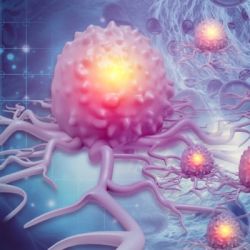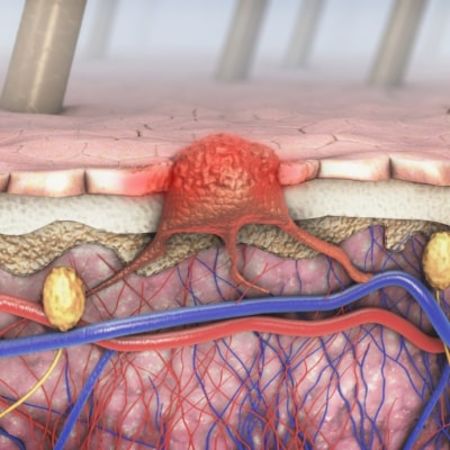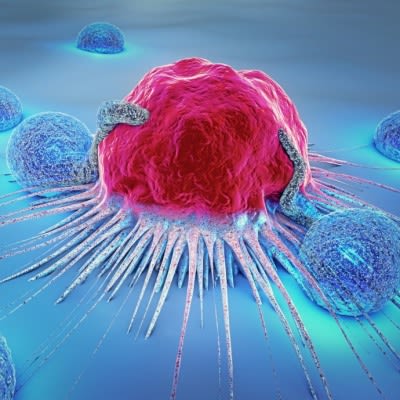Over the past decade, cancer rates have decreased in the US, but it remains a leading cause of death. There are over 18 million cancer survivors, with breast cancer being the most common among women. Despite improved treatments, survivors face challenges, including potential recurrence and increased risk of secondary cancers, particularly from radiation therapy. Studies have linked breast cancer treatment, including radiation, to higher risks of secondary cancers, such as melanoma. However, there's limited understanding of the long-term risk of nonkeratinocyte skin cancers after breast cancer treatment. A recent study published in JAMA Network, used the NCI SEER database to analyse this risk, focusing on different treatment modalities and cancer subtypes. Does radiation therapy, especially targeting the breast or trunk, increase the incidence of nonkeratinocyte skin cancers.
Surveillance, Epidemiology, and End Results (SEER) program data offers insights
This cohort study, conducted using deidentified data from the NCI SEER program, was exempt from review by the Stanford University Institutional Review Board, and informed consent was waived. Following the STROBE guideline, the study analyzed data from 17 registries spanning from January 1, 2000, to December 31, 2019. However, the study has limitations. The SEER program lacks comprehensive family history or genetic profiles, preventing stratification of nonkeratinocyte skin cancer incidence based on genetic variants. Moreover, it excludes the most common skin cancers, squamous cell carcinoma and basal cell carcinoma, warranting further investigation. Limitations in reporting radiation therapy and underascertainment of it in the SEER data may affect the incidence of skin cancer. The absence of reported follow-up time could underestimate subsequent cancer risk, and the study couldn't determine the precise location of radiation therapy, impacting the assessment of subsequent cancer development risk.
Increased melanoma and hemangiosarcoma risks after breast cancer radiation
Researchers examined 875,880 breast cancer patients to assess the risk of subsequent nonkeratinocyte skin cancer post-treatment, especially after radiation therapy. It found a significant increase in this risk after breast cancer treatment, notably elevated with radiation therapy. Thirty-five different subtypes of nonkeratinocyte skin cancer were identified, with melanoma, hemangiosarcoma, and Merkel cell carcinoma being the most common. Melanoma and hemangiosarcoma showed particularly heightened risks after breast cancer radiation, especially on the breast or trunk, with hemangiosarcoma showing the highest increase. The study underscores the significant role of radiation therapy in subsequent nonkeratinocyte skin cancer development.
Breast cancer follow-up care plans should include skin monitoring and early detection
While UV radiation exposure is a well-known environmental risk factor for skin cancer, cancer treatment modalities also pose risks. Radiation therapy, despite its effectiveness in reducing breast cancer recurrence and mortality, is associated with adverse effects, including potential skin toxicity. Other treatment modalities, when combined with radiation therapy, may further increase the risk of subsequent nonkeratinocyte skin cancers, as seen with hemangiosarcoma and lymphedema. Despite the overall small rate of subsequent nonkeratinocyte skin cancer, the importance of monitoring and early detection remains crucial, as serious skin cancers like melanoma can be effectively treated when detected early. However, there's mixed evidence regarding the effectiveness of patient self-surveillance through skin checks. These findings highlight the need for better incorporation of subsequent cancer risk assessment into patient consultation and survivorship follow-up care plans for breast cancer patients.
This cohort study is the first to characterize the risk of nonkeratinocyte skin cancer subtypes after breast cancer radiation therapy. Findings indicate a heightened overall risk of subsequent nonkeratinocyte skin cancers, particularly melanoma and hemangiosarcoma, subsequent to breast cancer radiation therapy. This implies that when skin cancer occurs in the breast or trunk area, the level of risk escalates. Future research could delve into the impact of radiation dosage and the genetic profiles of breast cancer patients as potential factors contributing to this heightened risk.
Source: JAMA Network
Image Credit: iStock




















